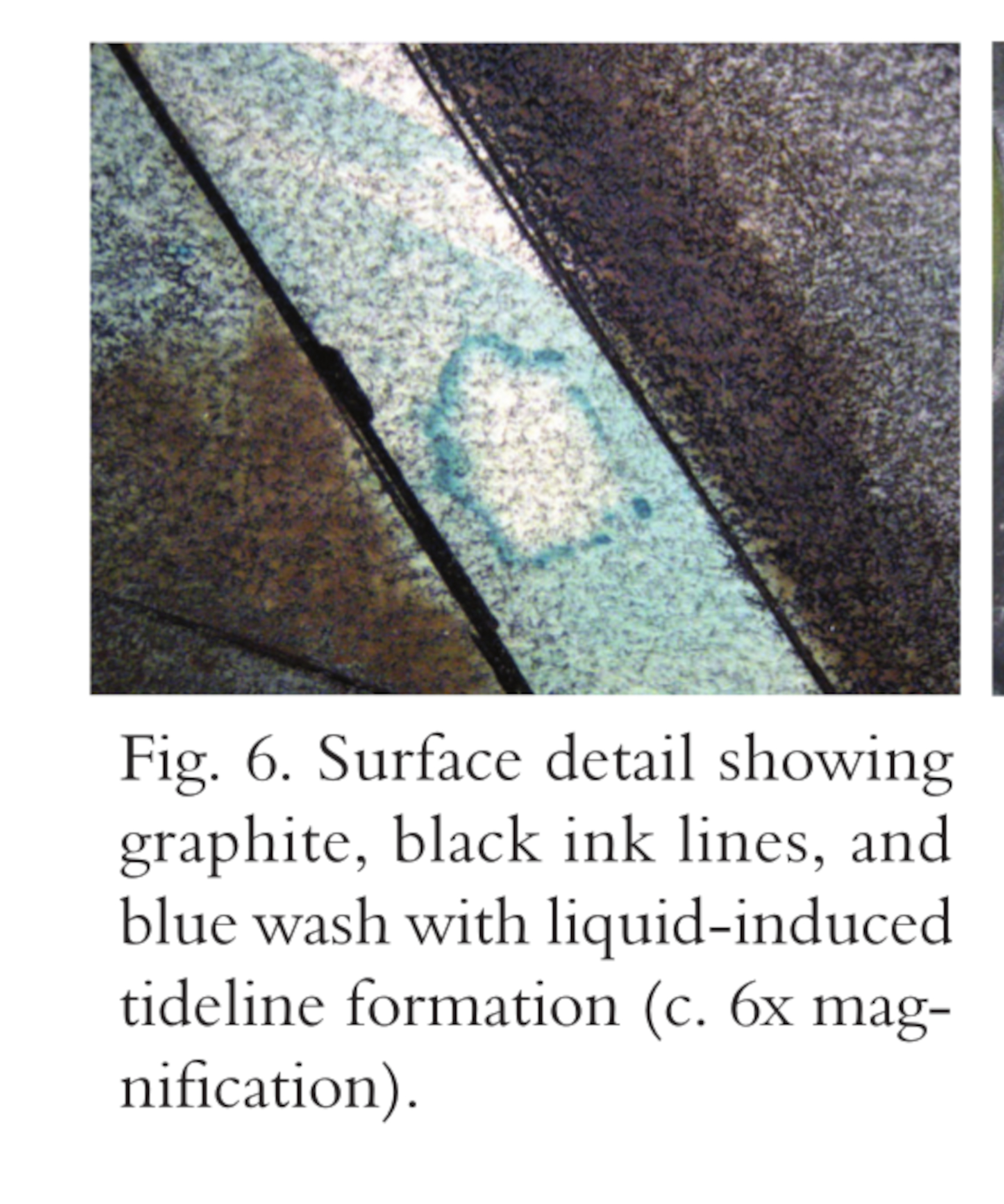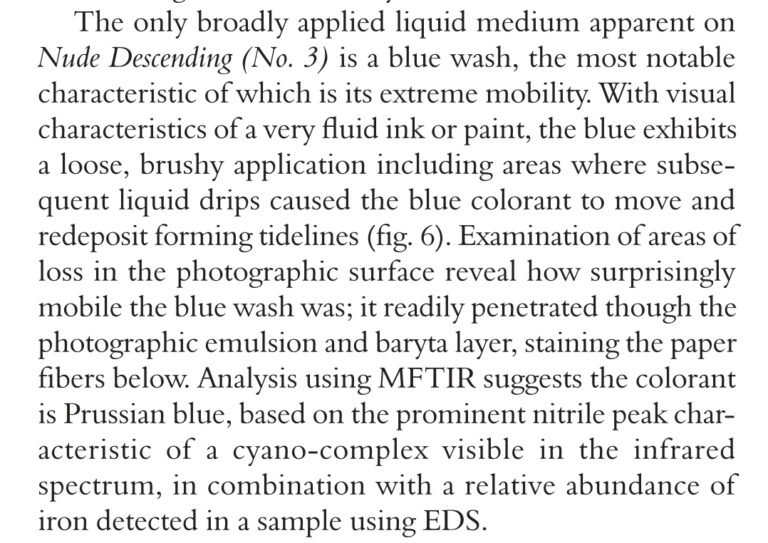Conservation Report
Although Morée has not yet undergone a formal conservation study, the visual evidence of its surface treatment
is unmistakable. What looks at first like damage or age is, on closer inspection, a carefully constructed field
of translucent stains, lifted pigment, and displaced ink. This is not deterioration—it’s technique.
We refer to this as the Veil Water effect: a subtractive process in which washes or inks are applied and then selectively removed, leaving behind a ghosted texture. It creates the illusion of water damage or exposure—
but unlike actual decay, it obeys the logic of design.
Interestingly, the the first hint of this surface effect was documented in the conservation report for Nude
Descending a Staircase No. 3 (1916), where colorant was found to have been “moved and
redeposited, forming tide lines”.
While this report is unrelated to Morée, which came after, it is plausible that this small unusual stain
was part of the inspiration to use the effect later in the Morée painting.
In Morée, this veil-like surface doesn’t just decorate—it conceals, interrupts, and reframes the entire image.
And its echoes in later Dada works suggest that it was noticed, remembered, and re-used.
Excerpt From Page 5 of Nude Descending a Staircase No. 3 Conservation Study

